Other Info
Conference Tour
Information
Time: 13:30-18:00
Gathering Location: Registraiton Counter
Tour Itinerary
Beitou Hot Spring Museum→ Beitou Thermal Valley→Lengshuikeng Recreation Area →Jingshan Suspension Bridge →Qingtiangang Grassland→Conference Banquet Venue
Rainy Day
National Palace Museum→Conference Banquet Venue
Introduction
Beitou Hot Spring Museum 北投溫泉博物館
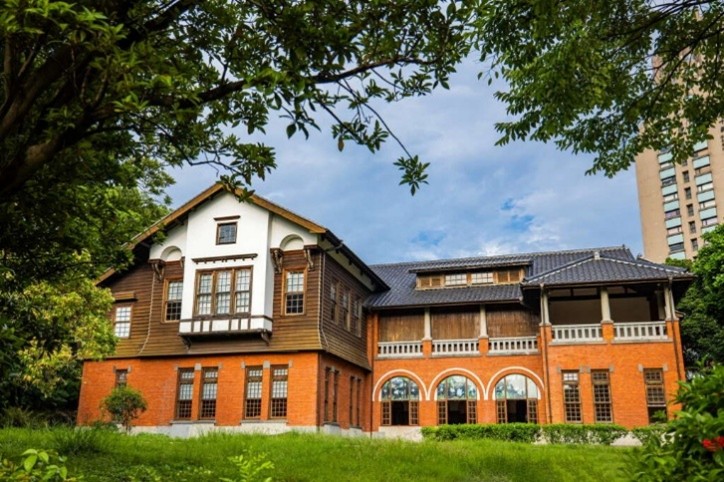
The historic public hot spring bathhouse, renowned since the Japanese colonial era, features an English Tudor-style country house design. Its sturdy red brick walls, black-tiled roof, and lush greenery create a tranquil and inviting atmosphere, making it a perfect place for relaxation. On the first floor, Roman-style arches encircle the bath, while sunlight filters through stained glass, casting exotic and colorful reflections. The second floor showcases a traditional Japanese tatami room, where wooden flooring and the subtle scent of hot spring water evoke a nostalgic glimpse into the past.
Looking out, visitors can enjoy a picturesque view of the verdant Beitou Park and the eco-friendly Beitou Library, a serene spot for relaxation after a soothing hot spring bath. From the Tatami Activity Hall, the entire Beitou Valley and park landscape unfold before the eyes. The well-ventilated open indoor space, infused with a faint sulfur aroma, leaves a lasting impression of the unique charm of Beitou’s hot springs.
Beitou Thermal Valley 北投地熱谷
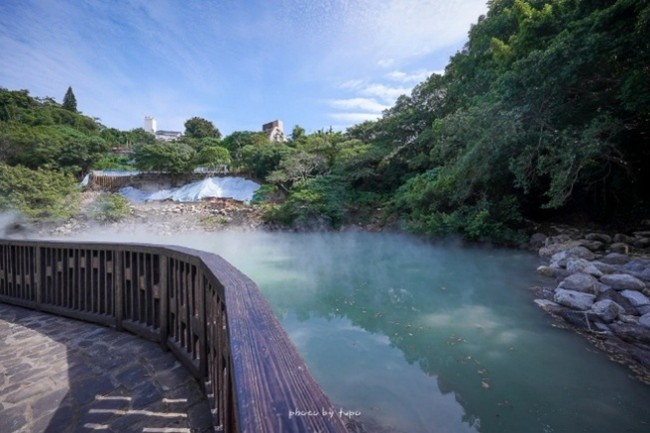
Thermal Valley, located beside Beitou Park in Taipei’s Beitou District, is one of the primary sources of Beitou’s hot springs and has the highest water temperature in the Datun Mountain range. The billowing sulfuric steam creates an ethereal landscape, earning it the poetic name "Mineral Mist." During the Japanese colonial era, it was recognized as one of Taiwan’s Eight Scenic Spots and Twelve Attractions.
The hot spring pool in Thermal Valley is surrounded by railings, scenic pavilions, and a shallow water channel. While cooking is not permitted, visitors can still soak their feet in the warm waters of the stream, experiencing the soothing geothermal essence of this natural wonder.
Lengshuikeng Recreation Area 冷水坑
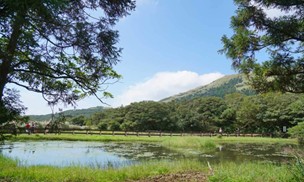
Compare to the "hotter" hot spring of the Datun Mountains, the hot spring here is colder, only about 40。C, so it is called Lengshuikeng (Cold Water Tunnel). The Lengshuikeng was a bowl shape of crater that unfailingly gushed hot spring out. In addition to the unique volcano scenery, there is the individual milk white color sulfur spring, so-called "the Milk Pool."
The Lengshuikeng Hot Spring is divided into two parts. One is the hot spring cave that is fult of ivory white color powder crystal, only for visiting. The other side is hot spring pool that is turbid and milk white color, also names as "Milk Pool." 1911 AD, Yangmingshan National Park Office built two hot spring pools, separated by gender, for free service.
Jingshan Suspension Bridge 菁山吊橋
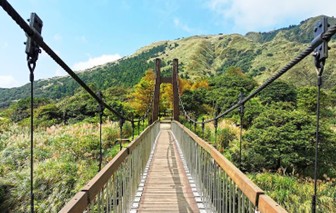
Jingshan Suspension Bridge, spanning across Lengshuikeng Creek, stretches approximately 50 meters in length. It is distinguished by its reddish-brown bridge pillars, black steel cables, and brown wooden planks, standing out strikingly amidst the lush green mountains. Lengshuikeng Creek, rich in sulfuric minerals, is one of the tributaries of the Neishuang Creek, and remnants of historical sulfur mining sites can still be found nearby.
After crossing the suspension bridge, turning right leads to a gentle and well-maintained trail. Along the way, visitors will pass by the Lengshuikeng Ecological Pond, a serene cryptomeria forest, the Jixinlun Observation Deck, and a tranquil forest path. A fork in the trail offers an option to detour toward Silken Waterfall, while continuing straight leads toward Qingtiangang. The journey is a refreshing experience, with shaded greenery, crisp mountain air, and breathtaking natural scenery along the way.
National Palace Museum 國立故宮博物院
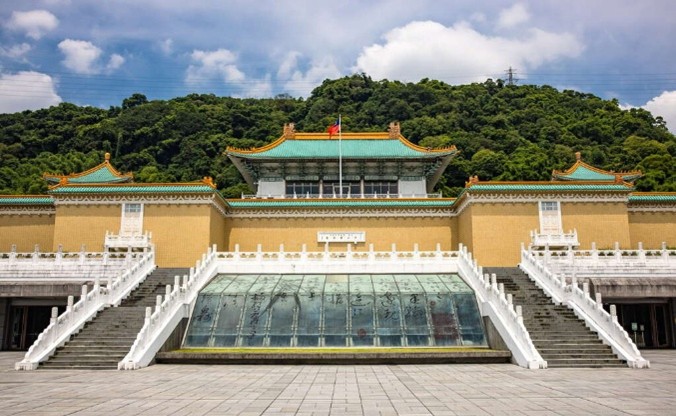
The Taipei National Palace Museum is a world-class museum that hosts an eclectic collection of treasures kept by generations of Emperors ruling from the Forbidden City. In WWII, Nationalist troops seized the most important pieces in order to prevent invaders from ransacking China's national treasures. A twist of fate eventually brought these treasures to Taiwan.
The Taipei National Palace Museum is designed in the style of a Northern Chinese palace. The museum is home to hundreds of thousands of historical relics that make up the world's most comprehensive and precious collection of ancient Chinese artifacts. The entire collection covers 5,000 years of China's historical and artistic achievements.
The museum provides Chinese, English, French, German, Japanese, Spanish and Korean language guides and museum-related literature. The museum is a must- see on any visitor's itinerary.